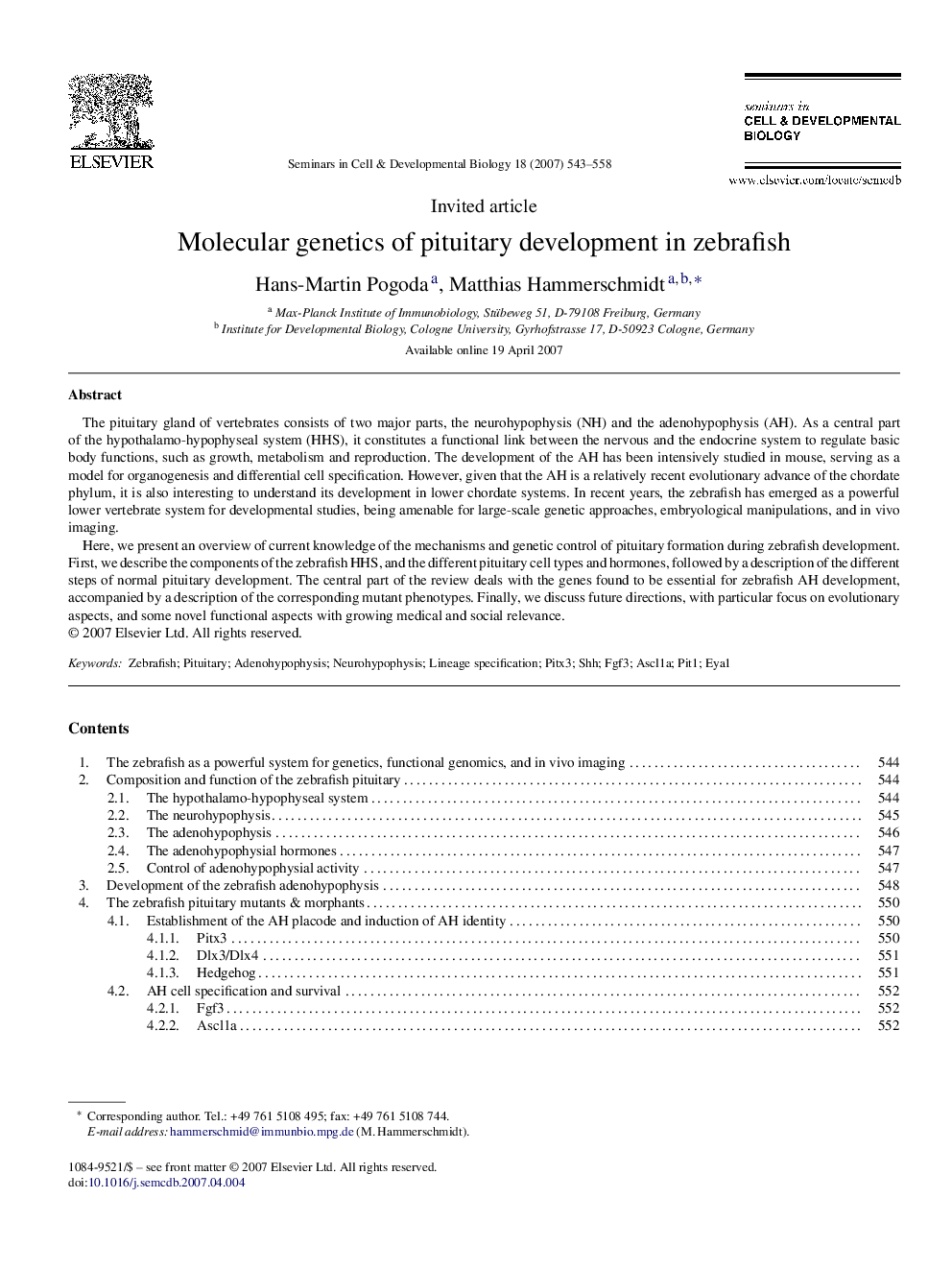| Article ID | Journal | Published Year | Pages | File Type |
|---|---|---|---|---|
| 2203266 | Seminars in Cell & Developmental Biology | 2007 | 16 Pages |
The pituitary gland of vertebrates consists of two major parts, the neurohypophysis (NH) and the adenohypophysis (AH). As a central part of the hypothalamo-hypophyseal system (HHS), it constitutes a functional link between the nervous and the endocrine system to regulate basic body functions, such as growth, metabolism and reproduction. The development of the AH has been intensively studied in mouse, serving as a model for organogenesis and differential cell specification. However, given that the AH is a relatively recent evolutionary advance of the chordate phylum, it is also interesting to understand its development in lower chordate systems. In recent years, the zebrafish has emerged as a powerful lower vertebrate system for developmental studies, being amenable for large-scale genetic approaches, embryological manipulations, and in vivo imaging.Here, we present an overview of current knowledge of the mechanisms and genetic control of pituitary formation during zebrafish development. First, we describe the components of the zebrafish HHS, and the different pituitary cell types and hormones, followed by a description of the different steps of normal pituitary development. The central part of the review deals with the genes found to be essential for zebrafish AH development, accompanied by a description of the corresponding mutant phenotypes. Finally, we discuss future directions, with particular focus on evolutionary aspects, and some novel functional aspects with growing medical and social relevance.
